Hi everyone!
As I finish up a short story (set in 1911) that features a spirit medium as the protagonist, I thought you might get a kick out of this post from five years ago.
Hope you are enjoying your summer!
~Kathy
Today we’re wrapping up the spiritualism series with some of those “gotcha” moments, sometimes funny, sometimes pathetic, when frauds were exposed in public.
“GOTCHA” METHOD 1: Professional De-bunkers
Almost as plentiful as fraudulent mediums were the debunkers who sought to catch them at it. Pictured below were some of the most well-known of their time: researchers Harry Price (National Laboratory of Psychical Research, University of London) and Frank Podmore (Society for Psychical Research, London), and professional magicians John Nevil Maskelyne and Harry Houdini. Podmore’s and Maskelyne’s activities were part of the Victorian Period proper; Price and Houdini built upon such efforts, exposing frauds in the 1920s and ’30s.
| Frank Podmore, 1856-1910 |
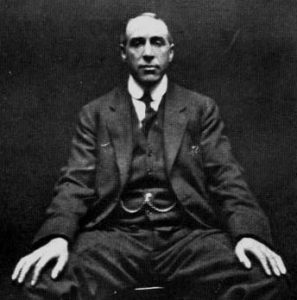
|
John Nevil Maskelyne 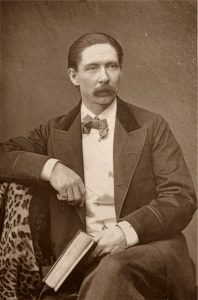 After watching the Davenport brothers exhibit their “spirit cabinet,” purported to manifest spirits while the brothers were tied up inside, Maskelyne suspected fraud. With the help of George Alfred Cooke, he built his own cabinet and in 1865 launched a career of stage magic that lasted decades, whereby he demonstrated how to artificially create many of the spiritualists’ effects.
|
|
|
|
Harry Houdini was the ultimate showman. We associate him primarily with escape artistry, but many of his shows (see playbill, above) were based on re-creating spiritualists’ effects and exposing fraud.
|
Slade vs. Lankester
 |
| Dr. Henry Slade |
Dr. Henry Slade (1835-1905) was an American medium who specialized in spirit writing on slate blackboards. During Slade’s tour in Britain,
 |
| Prof. Ray Lankester |
Professor Ray Lankester (Professor of Zoology,1847-1929) set out to expose him. During Slade’s seances, he and another witness watched carefully. At the second séance, Lankester snatched the supposedly blank “spirit slate” to find that it had been pre-written. Lankester published an account of the incident in a letter to the Times, and sued him. Slade was convicted and sentenced to three months of hard labor (in England, they typically used an old statute of vagrancy – originially meant for gypsies). However, upon appeal the sentence was dismissed, whereupon Slade fled England.
Read the NY Times account
Francis Ward Monck:
During a seance in Huddersfield, England, Monck, a Baptist minister-turned-medium, was accused of fraud. As several men attempted to search him, he escaped through a window. Several props, such as “spirit hands,” were found among his possessions, and he was eventually caught, arrested, and tried for fraud. Like Slade, he was found guilty and received a three-month prison sentence. Back in New York, he opened a healing clinic and was sued numerous times over the years.
Source: Monck v Hilton, Law Reports [Divisional Court] Feb. 6 1877
“GOTCHA” METHOD 2: Rival Mediums
Cook vs. Guppy
Florence Cook (1856-1904) began her career as a medium at 15 (seems to be a trend, doesn’t it?), when she apparently levitated off the floor while with a group of friends. Soon after, she was causing the ghost of Katie King to materialize. Katie King was rather notorious in spiritualist circles, as she was supposed to be a murderess who, to atone for her sins in the afterlife, returned to convince people that the spirit world was real. (I think Jacob Marley had better justification for returning to save Ebenezer Scrooge, but that’s just one opinion). Being able to produce Katie King on demand became a profitable venture for Florence Cook.
However, success is not without its drawbacks. Rival medium Mrs. Samuel Guppy (1838-1917), an older and, by some accounts, a less attractive woman (sorry, couldn’t find a picture to bear this out), decided to give her rival a come-uppance. Of course, Mrs. Guppy couldn’t attend a seance of Cook’s – she was too well-known – so she enlisted the aid of William Volckman (who later became her husband). Here’s the account as described by Emma-Louise Rhodes:
Volkman bribed himself into the séance by presenting jewelery to Cook and, once the spirit appeared, proceeded to seize her and then hold the ‘spirit’ and declare that she was, in fact, none other than Cook dressed up. Edward Elgie Corner, Cook’s fiancé, assisted by other sitters, swiftly intervened and Katie King escaped back into the cabinet, leaving Volkman with a bloodied and scratched nose. On entering the cabinet (after an unknown elapse of time) Volkman found Cook tied as she had been at the start of the séance, but with her clothes in disarray.”
Florence Cook sort of got away with it that time, but was caught dead to rights (sorry, bad pun) several years later. She had abandoned the “Katie King” spirit in favor of “Marie,” a girl of twelve. During one seance, one of the attendees, Sir George Sitwell, noticed a corset underneath the spirit’s dress – something a girl of twelve would certainly not be wearing. He decided next time to grab the spirit. When he did, and the curtains of the spirit cabinet (where Cook was supposedly tied up) were parted, Cook was gone, with only boots and other garments left behind. The lights were turned on the reveal the “spirit” as Florence Cook, in her undergarments.
“GOTCHA” METHOD 3: Stupidity
This is one of my personal favorites. The following article was printed in The New York Times August 5, 1897. Note that “See Quoyah” is Sequoyah, the Cherokee leader.
So, what do you think? Such frauds seem primitive to us, but can we still be fooled by more sophisticated charlatans? I’d love to hear from you.
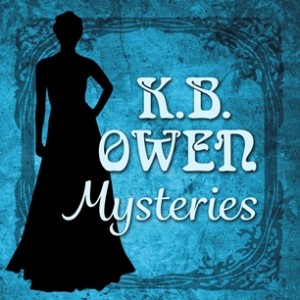



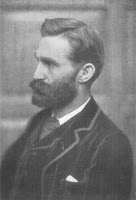

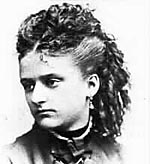



Great story!
I’m writing a book on the Lincolns and spiritualism and I love to hear these tales.
Keep up the great writing.
Terry
Thanks for your comment, Terry! Be sure to let me know when your book comes out. I have your other book on Booth on my Kindle but haven’t had a chance to read it yet. Looking forward to some leisure time this August!
Kathy – you come up with the greatest stuff. Fun post, once again.
Patricia Rickrode
w/a Jansen Schmidt
Thanks so much, Patricia! The shenanigans never end….